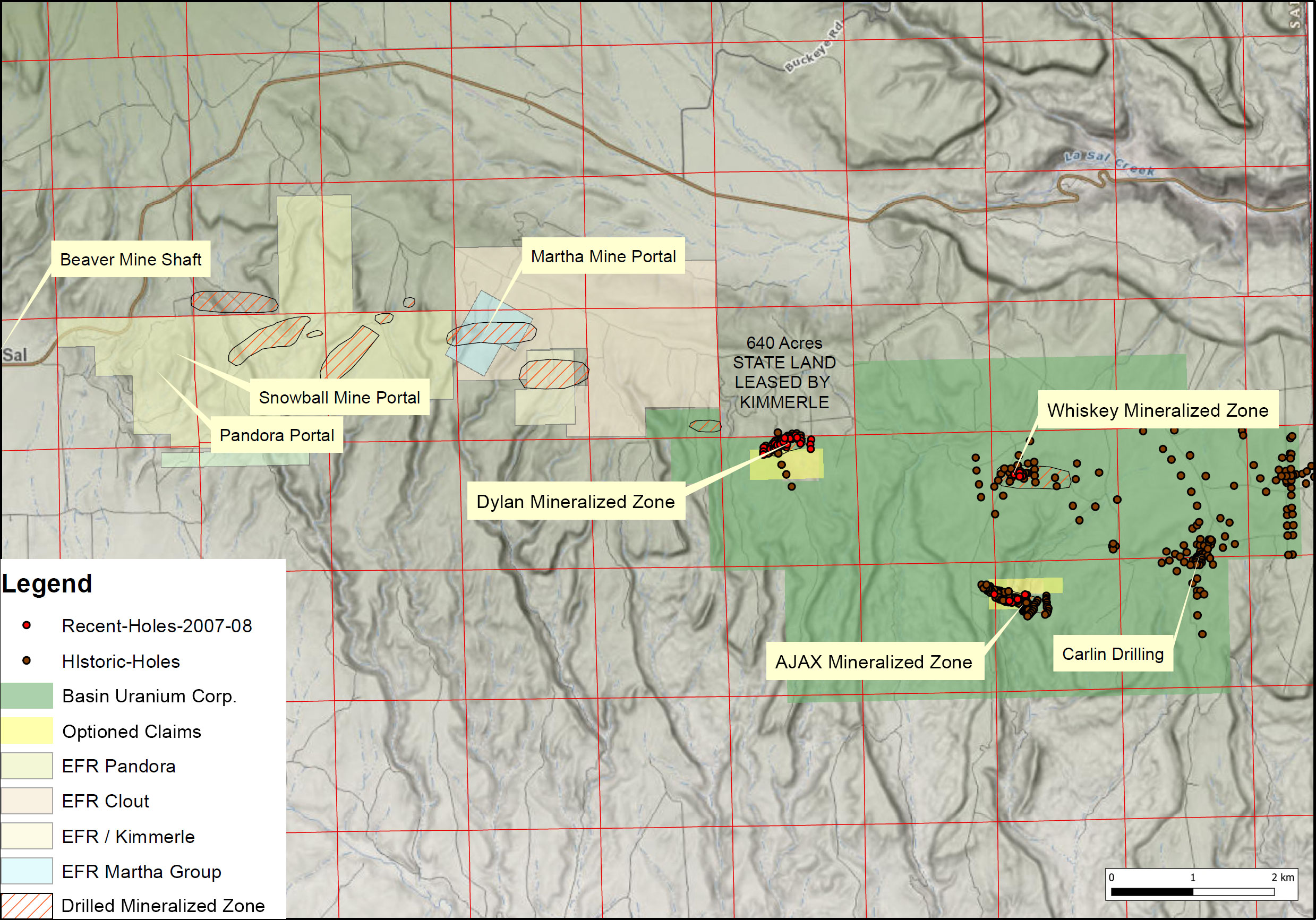Project Phase:
Exploration
Commodity:
Uranium
Size:
6,282 acres
Location:
San Juan County, Utah
Project Overview
The 6,282-acre Wray Mesa project is comprised of 308 unpatented lode claims in San Juan County, Utah. The Property is accessible via Utah State Highway 46 and unpaved Forest Service Roads, with access to power, water and proximal to the town of La Sal. The Property is contiguous to and adjoins Energy Fuel’s (EFR-T, UUUU-NYSE) fully-permitted and production-ready La Sal project which includes a number of past-producing uranium and vanadium mines (production of 550,000 lbs U3O8 in 2012). The La Sal project is host to Measured & Indicated resources of 4.1 Mlb of uranium (U3O8) plus 21.5 Mlb of vanadium (V2O5) plus Inferred resources of 0.4 Mlb of uranium plus 1.9 Mlb of vanadium (source: Technical Report on the La Sal District Project. Prepared for Energy Fuels Inc. by D.C. Peters and dated 2014-Mar-25). The project is wholly-owned (100%-interest) by Basin Uranium.
Project History
Uranium and vanadium production in the district dates back to the early 1900’s with the majority of the production derived from the Upper Salt Wash Member of the Morrison Formation (the ‘Formation’).
Work by previous operators discovered multiple areas of uranium-vanadium mineralization in the same geologic formation that accounted for the majority of production in the district (Upper Salt Wash Member of the Morrison Formation).
Mineralization on the property occurs at depths of 500 to 750 feet with the drill-defined mineralization ranging from 25 to 75 feet. Mineralization is typical sandstone-hosted tabular deposits wherein the uranium occurs in reduced and altered sandstones and sandstone-mudstones in major stream channels in the Formation.
Historical work dates back to Atlas Minerals and Pioneer Uravan in 1976 to 1983, who drilled a total of 495 exploration holes (of which logs for 193 holes totaling 137,510 feet or 41,913 metres were preserved), and Homeland Uranium in 2007-2008 who drilled 15 holes.
Past exploration was primarily focused on the Dylan, Ajax, Whiskey and Carlin targets. All of the mineralized areas are open to expansion. Historic drill data is not available for Carlin.
Most heavily drilled and tightest spacings with some holes 25 to 50 feet apart. A total of 164 historic holes drilled which defined mineralization a 1,200 by 25-75 metre area. Thirty (30) holes returned grades in excess of 0.1% eU3O8.
Best defined with drilling on a 100 by 100-foot grid. Thirty-nine holes were drilled in 1976 to 1983 with follow-up drilling in 2007 which defined mineralization over a 500 metre by 40-100 metre area. Seven (7) holes returned grades in excess of 0.2% eU3O8.
A total of 29 holes drilled at 100-foot spacings with a number of holes intersecting significant mineralization and defining an area of 400 by 10-70 metres. Further follow-up and more systematic drilling is required.
While complete historical records are unavailable, based on limited data mineralization was defined over a 150 by 20-70 metre area.
Tim Henneberry, P.Geo, consultant to for Basin Uranium is the Qualified Person as defined by National Instrument 43-101 and has approved the technical information on this website.



